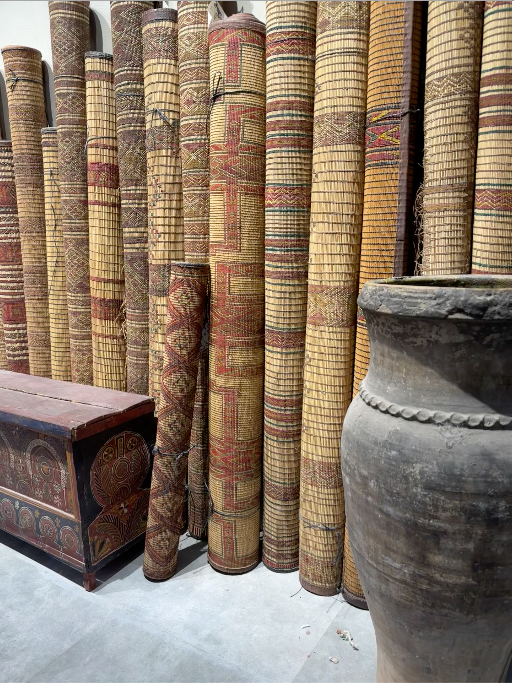No Products in the Cart
Tuareg Rug Weaving Techniques: A Deep Dive into the Art of Berber Carpet Making
Are you intrigued by the intricate patterns and deep cultural background of Berber carpets? Do you want to know more about the key techniques employed by the Tuareg people to produce these gorgeous rugs? This article will enlighten you about the world of Tuareg rug weaving techniques, exposing the long-standing art that was passed from generation to generation.
The Rich Tradition of Tuareg Rug Weaving
Tuareg rug weaving has been a tradition and art for thousands of years. The Tuareg, also known as the Blue Men of the Sahara, are some of the Berber nomadic tribes found in the Saharan desert. They are famous for weaving marvelous and stunning tufted rugs and carpets, which were an array of art pieces and intense story-telling tapestries of their culture and history.

Materials Used in Tuareg Rug Weaving
In its creation, the artisans prefer to use naturally occurring materials in the surroundings. The major material is wool from sheep and camels reared in the region. The wool is then processed through a cleaning, dyeing, and spinning procedure to come up with different-color yarns. The dye is made of organic materials including plants, minerals, or pests, which provides the rug with the ancient earthy hues.
Weaving Techniques
Weaving a Tuareg rug is a time-consuming, tedious, and precise work that takes great skill and patience. In Tuareg fabric weaving, vertical loom is used and different intricate patterns and designs are made. The process involves weaving the warp and weft threads in a series of interlocking patterns to build the foundation of the rug.
Patterns and Designs
The incredible thing about Tuareg rugs is the stunning patterns that cover them almost entirely. Unlike many patterns found on rugs around the world that serve a largely decorative purpose, these patterns have deep symbolic significance. They represent various aspects of Tuareg life, from the family to the nature around them, and to their spirituality. By examining these patterns, one can learn the story of the rug, from basic geometric shapes to complex abstract symbols.
Cultural Significance
For the Berber people, the Tuareg rugs are more than household items; they are cultural treasures passed down from generation to generation. They symbolize the Tuareg’s identity and heritage, integrating symbolism that represents unity, hospitality, and tradition. The geometric designs and complex patterns are an embodiment of the Tuareg’s cultural connection to nature and their deep respect for their roots.
Conclusion
To conclude, Tuareg rug weaving reflects the deep cultural background of the Berber tribes. Different intricate patterns and ancient weaving methods made from natural materials demonstrate the tradition that never gets old and stay as beautiful and meaningful. Therefore, the next time you will look at the Maghrebi carpet do not forget to acknowledge the professionals and the amount of work embedded in the piece.